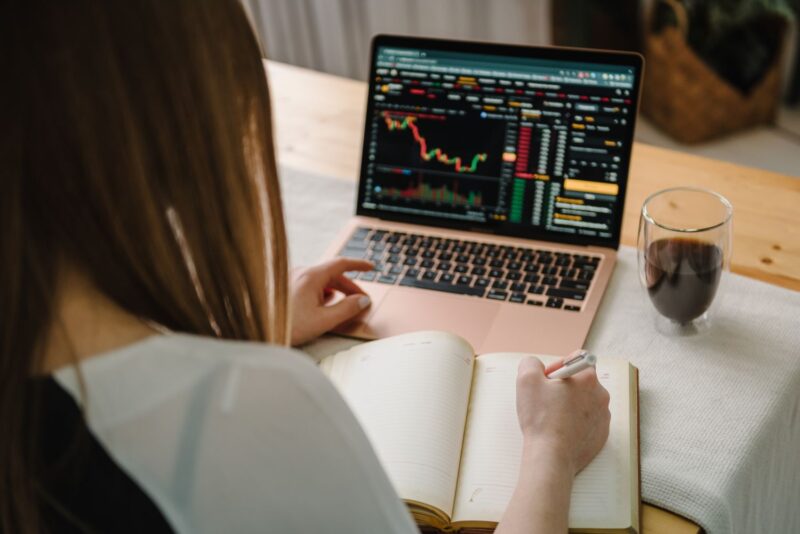Beginners often face the challenge of deciding how much capital to allocate when starting to trade. While the allure of high returns can push some to invest large sums, others prefer a more cautious approach. The goal for beginners should not only be maximizing returns but also managing risk effectively.
Choosing the right amount to invest can significantly affect success in trading. Whether through smaller investments or larger allocations, a clear strategy must guide every decision.
Key Points
- Start small, scale gradually.
- Focus on learning and risk management.
- Diversify investments for protection.
- Risk tolerance is personal, assess yours.
- Trading platforms offer flexibility for various budgets.
Determining Initial Capital for Trading

New traders must strike a balance between potential gains and minimizing risks. The amount of capital will depend on several factors, including risk tolerance, experience, and long-term goals. For example, a platform like Binomo allows beginners to trade with minimal investment. With only $1 per trade, traders can learn without risking significant capital. Starting small helps to build confidence and sharpen strategies before committing more funds.
The key to success in trading lies not in how much is invested initially but in the discipline of managing risks and growing knowledge. Smaller investments allow room for error and learning.
The Importance of Risk Management
The most experienced traders understand that losses are inevitable. Beginners should invest an amount they are willing to lose while focusing on long-term growth rather than short-term wins.
As a general rule, beginners should never risk more than 1-2% of their total capital on any single trade. This approach limits losses and provides room to recover from mistakes. For example, with $1,000 in total capital, each trade should involve only $10 to $20. This controlled risk helps reduce emotional decision-making and allows traders to stay focused on long-term goals.
Learning Through Smaller Investments
Beginners should avoid large investments in the early stages. Instead, it’s important to invest in learning and refining skills. Start small, learn, and gradually scale as experience grows. The smaller the initial investment, the less pressure there is to generate immediate returns.
Smaller investments also allow traders to practice strategies and adapt to changing markets. This incremental approach not only saves capital but also encourages steady growth. Education is a valuable asset, and small investments are a practical way to gain that knowledge while minimizing potential losses.
Diversifying the Portfolio

Beginners should avoid putting all their funds into a single asset or trade. A balanced portfolio includes a variety of asset classes such as stocks, commodities, or currencies. By diversifying, traders can protect themselves from market fluctuations and spread out the risk.
Diversifying ensures that losses in one area of the portfolio can be offset by gains in another. Even if a trader has a strong belief in one asset, keeping investments diversified can prevent significant losses if market conditions change unexpectedly.
How Much to Invest Initially
The amount of capital beginners should invest will vary based on personal financial situations. However, a general guideline is to start with an amount that feels manageable. For some, this may be $500; for others, it could be $5,000. The important thing is to invest only what one can afford to lose.
As traders grow more confident and knowledgeable, they may choose to increase their investments. But in the beginning, staying conservative and focusing on learning is the most important strategy. Trading with real money carries emotional weight, so starting with a smaller sum helps avoid rash decisions driven by fear or excitement.
Risk Tolerance and Emotional Control
Beginners must assess their risk tolerance before entering the market. Those with a low tolerance should start with smaller investments, while those with higher tolerance can scale up more quickly. Emotions often drive poor decisions in trading, so keeping emotions in check is crucial. Risking less helps to avoid the emotional rollercoaster that often leads to impulsive choices.
Trading is about discipline and patience. It’s not about chasing quick wins but building a sustainable strategy over time. Small initial investments ensure that emotions don’t overwhelm judgment, and they keep traders focused on learning instead of short-term gains.
Leveraging Trading Platforms

Modern trading platforms provide beginners with opportunities to trade even with minimal capital. Some platforms allow trading with as little as $1, which offers a great way for new traders to start without risking large amounts of money. This flexibility makes it easier to get started while learning the ropes.
There are also platforms that offer beginner-friendly features such as demo accounts, where traders can practice without real money, and low-entry trades. These tools help traders gain experience and test strategies without the financial pressure that comes with larger investments. Choosing a user-friendly platform with educational tools is essential for beginners.
Conclusion
Beginners should prioritize learning, risk management, and emotional discipline when starting out in trading. Rather than focusing on how much to invest, the emphasis should be on building strategies, understanding market behavior, and gradually scaling up investments over time. The initial capital should be small, allowing room for error while maintaining a focus on long-term success.
Risk tolerance will vary between traders, but the best approach for beginners is to start small, diversify, and gradually build their confidence before making larger commitments. Trading can be profitable, but careful planning and patience are the keys to sustained success.


